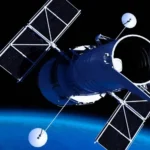In the vast expanse of the cosmos, the practice of astronomical observations stands as a beacon of human curiosity and scientific exploration. This article embarks on a cosmic journey, delving into the significance of astronomical observations, the cutting-edge technologies fueling this field, the breathtaking celestial phenomena unveiled, and the profound impact these observations have on our understanding of the universe.
The Significance of Astronomical Observations
Astronomical observations serve as our cosmic windows, allowing us to peer into the depths of space and time. These observations are the foundation of astrophysics, unraveling the mysteries of celestial bodies, cosmic phenomena, and the universe’s fundamental laws. By collecting and analyzing data from astronomical observations, scientists can construct a comprehensive picture of the cosmos, addressing questions about the universe’s origins, evolution, and fate.
Telescopes as Time Machines
Telescopes, both ground-based and space-based, act as time machines, capturing the light emitted by distant celestial objects. This light, often traveling across millions or even billions of years, carries vital information about the early epochs of the universe. Astronomical observations with powerful telescopes provide a unique opportunity to study galaxies, stars, and other cosmic entities in their various stages of formation and evolution, offering insights into the dynamic processes shaping our cosmic neighborhood.
Probing the Cosmos with Different Wavelengths
Astronomical observations extend beyond the visible light spectrum, encompassing a wide range of wavelengths such as radio waves, infrared, ultraviolet, X-rays, and gamma rays. Each wavelength reveals distinct aspects of the universe, unveiling hidden cosmic phenomena. For instance, radio telescopes enable the study of pulsars and quasars, while infrared observations unveil the birthplaces of stars within dense interstellar clouds. Combining data from multiple wavelengths provides a comprehensive understanding of celestial objects and their intricate interactions.
Cutting-Edge Technologies Driving Astronomical Observations
Advancements in technology have propelled astronomical observations to unprecedented heights. State-of-the-art telescopes, detectors, and data analysis techniques enable scientists to push the boundaries of what we can observe and comprehend. The advent of space telescopes, like the Hubble Space Telescope, has revolutionized our view of the universe by capturing stunning images and spectra, transcending the limitations imposed by Earth’s atmosphere.
Space Telescopes: Unveiling the Cosmic Canvas
Space telescopes, orbiting beyond the distortion of Earth’s atmosphere, provide unparalleled clarity and precision in astronomical observations. The Hubble Space Telescope, for instance, has delivered iconic images of distant galaxies, nebulae, and planets, fundamentally altering our understanding of the cosmos. The upcoming James Webb Space Telescope promises to usher in a new era of discovery, peering deeper into space and time, capturing the faintest glimmers of light from the most distant corners of the universe.
Interferometry and Virtual Observatories
Interferometry, a technique that combines signals from multiple telescopes, enhances the resolution and sensitivity of astronomical observations. This technology allows astronomers to simulate the power of a much larger telescope, enabling the study of fine details in celestial objects. Virtual observatories, powered by advanced data processing and storage capabilities, facilitate the seamless integration of astronomical data from various sources, fostering collaborative research and a more holistic understanding of the universe.
Celestial Phenomena Unveiled through Observations
Astronomical observations have revealed many celestial phenomena that captivate the imagination and challenge our scientific understanding. From supernova explosions to the intricate dance of binary stars, these observations provide a front-row seat to the cosmic spectacle. The study of exoplanets, planets beyond our solar system, has also emerged as a vibrant field, with observations offering insights into the diversity of planetary systems and the potential for habitable worlds beyond Earth.
Gravitational Waves: Ripples in Spacetime
The detection of gravitational waves represents a groundbreaking achievement in astronomical observations. These ripples in spacetime, predicted by Albert Einstein a century ago, were first observed in 2015. Gravitational wave observatories like LIGO and Virgo have opened a new window into the universe, allowing scientists to study cataclysmic events like merging black holes and neutron stars. This revolutionary approach complements traditional observations, providing a novel means to explore the cosmos.
Exoplanet Discoveries and the Search for Extraterrestrial Life
Astronomical observations have transformed our understanding of planetary systems beyond our own. The discovery of thousands of exoplanets, some within the habitable zone of their host stars, raises profound questions about the potential for extraterrestrial life. Observations of exoplanetary atmospheres offer clues about their composition, weather patterns, and the conditions that could support life, fueling the ongoing search for signs of habitability in the cosmos.
Citizen Science and Public Engagement in Astronomical Observations
Astronomy has become a participatory science, with citizen scientists and the general public contributing to observational efforts. Projects like SETI@home, which analyzes radio signals for signs of extraterrestrial intelligence, and platforms like Zooniverse, where volunteers classify galaxies and analyze astronomical data, showcase the collaborative nature of modern astronomy. Public engagement in astronomical observations fosters a sense of wonder, curiosity, and scientific literacy, ensuring that the excitement of the cosmos reaches a broader audience.
Educational Outreach and Astronomy Communication
Astronomical observations are not confined to the realm of scientists; they belong to everyone. Educational outreach programs, planetariums, and astronomy communication initiatives are vital in bringing the universe’s wonders to the public. By translating complex astronomical concepts into accessible and engaging formats, these efforts inspire the next generation of astronomers, scientists, and enthusiasts, fostering a lifelong appreciation for the mysteries of the cosmos.
Conclusion
Astronomical observations, propelled by cutting-edge technologies and fueled by human curiosity, continue to unveil the profound mysteries of the cosmos. From the depths of space to the detection of gravitational waves, each observation expands our understanding of the universe and our place within it. As technology advances and the cosmos reveals more of its secrets, the journey of astronomical observations promises to remain an ever-evolving and awe-inspiring exploration of the celestial wonders surrounding us.














